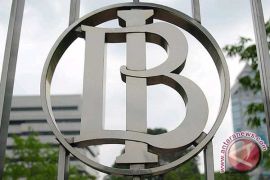"The interest rates on credits for working capital are down 62 basis points but those on consumer credits are up 84 basis points," BI`s director for banking regulations and research, Wimboh Santoso, said here on Saturday.
The drop in the interest rates had made the net interest margin (NIM) or the spread between the rate of interest on credits and deposits to decline 5.8 percent on aggregate.
The drop in the interest rates had also been seen in reports of prime lending rate (SBKD) which have to be publicized by banks with assets at more than Rp10 billion.
Wimboh said the overhead cost in June for corporate credits decreased from 3.17 percent in May to 2.6 percent while for retail from 3.36 percent to 2.75 percent, housing credits (KPR) from 3.54 percent to 3.06 percent and non-KPR from 3.49 percent to 3.54 percent.
The cost of funds (HPDK) rose a bit because some of them used the funds for increasing their statutory reserve (GWM).
The cost of funds for corporate credits rose from 6.17 percent in May to 6.18 percent, retail credits from 6.39 percent to 6.59 percent while for KPR down from 6.41 percent to 6.30 percent and non-KPR from 6.53 percent to 6.49 percent.
The corporate credit margin meanwhile rose from 1.8 percent to in May to 2.2 percent in June, retail credit margin rose from 2.20 percent to 2.43 percent, KPR from 1.91 percent to 2.29 percent and non-KPR from 2.37 percent to 2.53 percent.
So, the total prime lending rate (SBDK) for corporate credits was down from 11.18 percent in May to 11.03 percent in June, while retail credits from 12.0 percent to 11.85 percent, KPR from 11.85 percent to 11.69 percent and non-KPR from 12.45 percent to 12.10 percent, he said.
Wimboh said the drop in the interest rate occurred not only because banks had been required to announce their prime lending rate as of March this year but also because banks had started to increase their efficiency which helped reduce credit interests.
The prime lending rate covers three components namely cost of funds, overhead cost in credit processing and profit margin. So the interest rate imposed on debtors would not always be the same as the prime lending rate, he said.
As of March 2011, banks in Indonesia have been required to announce their prime lending rate for corporate, retail and consumption (KPR and non-KPR) credits.
The non-KPR credits excludes supply of funds through credit cards and non-collateral credits (KTA).
(Uu.H-YH/HAJM/S012)
Editor: Priyambodo RH
Copyright © ANTARA 2011












